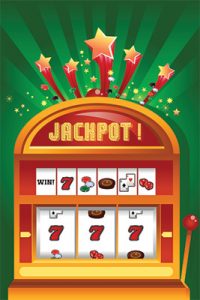Sales is a Numbers Game

“No one closes every sales call no matter how good the pitch is.”
Anyone in the field can attest to this fact. I spent a summer in high school working for the St. Louis Symphony orchestra doing fund raising via the telephone. The best people had a higher close rate than I did, but the essential truth of the matter was that no one closes every sale no matter how good the pitch is, not even close, even 40% is unheard of.
At the Symphony, we were only calling previous contributors, so this was not plain cold calling. All of these people supported the orchestra in previous years. We offered patrons a very nice gift package with free tickets among other things, for even the smallest donation of around $30. Even with this nominal amount, we were only able to renew 25-30% of the supporters.
With sales in the current market place for the design industry (and many other service related industries), a good average stands at around 20% (or one in five). So for every potential client, you have about a 20% chance in actually landing the contract. This makes sense when you think that most potential clients will only have time to reach out to five to seven vendors for pricing.
[bctt tweet=”If you have a good pitch and proposal package, you should be able to close 1 in 5 RFPs.” username=”DesignQuote”]
This means 20% of proposals, not raw leads! That is another level, and one that sites around 10% – so 1 out of 10 people that contact you (leads) will actually end up converting to an RFP (Request for Proposal).
Competition for Design Work is Global
Many years ago, before mass communications and the ability to work on a project anywhere, people were limited to the service providers within their general area. There might be two people in their town, or if they lived in a city, perhaps four or five potential providers.

Today, with the majority of the work being information technology, a huge segment of business can be done remotely.
From design to technical writing a US based client now has the entire English speaking world available to them. It is easy to get proposals from 5 or 10 companies and there are thousands of companies all competing for the same business.
With that being said, most people will limit their choices, no one wants to read 20 proposals from 20 different people on the same project. People will normally want to get enough proposals to make sure the numbers they are getting are reasonable. Then base their decision on the criteria they have for the project.
Make your proposals stand out
People do not always want the lowest price, often they are more than willing to pay a premium for someone with more experience. Value can come from a better track record not just the bottom line.
With that being the case, clients are typically comparing services from multiple providers. They may be looking at three, they may be looking at ten. It’s critical that you have a professional and well done portfolio to show to a potential client.
Often the website and portfolio will be the only real exposure the client has to you, it is your first impression and a contract can hinge on the quality and accuracy of your portfolio.
Your proposal should have a very professional presentation and not just be a scope of work document. Make sure you explain your methodology, project management process, background and experience. You should also include case studies and testimonials. Your proposal packet may be the ONLY impression you make on key decision makers, don’t skimp on it.
Create an excellent proposal package
Put together a well thought out package that you can physically mail to prospective clients. When they are comparing the three different prospective vendors, you want your company to stand out. Impress because you have a great presentation, not be discounted because of a poor one.
Each level of sales becomes more difficult, the proposal is the final round, make sure you make it count.
Conclusion
Remember that you will not close every deal. Don’t let it get you frustrated. The best sales people convert about 10% of their leads to proposals, and then only close about 20% of those. A well designed proposal package will help close the deal.
Start with marketing to generate leads. Cultivate leads to generate RFPs and send out proposals. Deliver great proposals to land contracts.

